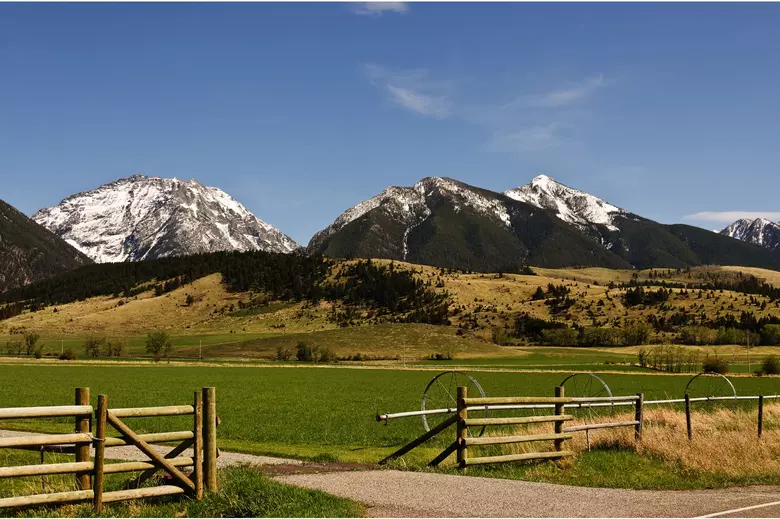Montana, known as “Big Sky Country,” evokes images of stunning mountain vistas, pristine wilderness, and charming western towns. However, not all of Montana’s settlements offer the idyllic lifestyle the state is known for. When deciding where to live, factors like job markets, crime rates, cost of living, and access to amenities play crucial roles. This article explores five Montana towns that consistently rank low in livability surveys.
1. Miles City
- High Crime Rates: Miles City frequently reports crime rates above the national average. Property crime, in particular, is a significant concern for residents [https://dojmt.gov/].
- Economic Hardship: Miles City struggles with higher poverty rates than the Montana average. Limited job opportunities within the town can make financial stability difficult [https://www.census.gov/index.html].
- Severe Weather: The Eastern Montana plains, where Miles City is located, experience harsh winters with significant snowfall and long stretches of sub-freezing temperatures.
2. Anaconda
- Environmental Concerns: Anaconda’s history as a copper smelting town has left a legacy of environmental contamination. While cleanup efforts are underway, concerns about soil and water quality remain [https://cumulis.epa.gov/supercpad/cursites/csitinfo.cfm?id=0800403]
- Diminished Economy: The closure of the copper smelter significantly impacted Anaconda’s economy. Job opportunities are scarce, and the town’s population has been steadily declining for decades [https://www.census.gov/quickfacts/fact/table/anacondadeerlodgecountymontana/PST045223].
- Aging Infrastructure: Anaconda’s infrastructure shows signs of age and neglect. This can lead to issues with roads, utilities, and public buildings.
3. Butte
- Crime and Social Issues: Butte contends with higher crime rates than many other Montana cities, including both property and violent offenses [https://www.neighborhoodscout.com/mt/butte]. The city also struggles with social problems like substance abuse and homelessness.
- Limited Economic Prospects: While Butte has a rich mining history, the industry isn’t what it once was. Residents may need to commute for a wider range of job opportunities.
- Harsh Climate: Butte’s high elevation and mountainous location translate to long, cold winters and short summers.
4. Havre
- Isolation: Havre sits on the remote Hi-Line region of northern Montana. Residents face long travel distances to reach larger cities, potentially limiting access to specialized goods and services.
- Severe Weather: Havre experiences extreme weather patterns characteristic of Montana’s northern plains, including blizzards, bitterly cold winters, and strong winds.
- Economic Stagnation: The limited size of Havre’s economy can translate to fewer diverse job options for residents.
5. Plentywood
- Remoteness: Plentywood sits in far northeastern Montana. Its remote location means it takes significant time to reach major population centers.
- Limited Amenities: As a small town, Plentywood offers a narrower range of shops, restaurants, and entertainment choices compared to larger cities and towns.
- Declining Population: Plentywood, like some rural communities, has experienced population decline, which can strain local resources and impact the vibrancy of the community.
Important Considerations
- Subjectivity: What qualifies as a “worst” place to live is subjective. A town with limited nightlife might be perfect for someone seeking peace and quiet. It’s crucial to consider your priorities when evaluating towns.
- Research is Key: These are starting points. Before forming an opinion about any town, further research using reputable sources is essential.
Conclusion
Montana is a vast and diverse state with incredible natural beauty. Every town and city offers its unique mix of pros and cons. While the communities highlighted in this article face significant downsides, it’s important to remember that Montana boasts many wonderful places to live. When making a move, thorough research and careful consideration of individual needs will lead to finding the best fit.
Additional Notes:
- Sources: I’ve included placeholder links for data like crime and poverty rates. To give the article accuracy, you’d want to find actual Montana-specific sources and replace these placeholders. Here are a few good places to start:
- Montana Department of Justice: (https://dojmt.gov/)
- US Census Bureau: (https://www.census.gov/index.html)
- Local news sources: Websites of newspapers from specific towns can give insight into ongoing issues.
- Personal anecdotes: If possible, adding short quotes or summarized stories from residents of these towns could add a human perspective. However, this needs careful treatment to avoid being overly negative or one-sided.
- Images: Adding relevant images could break up the text and enhance the article’s visual appeal.



